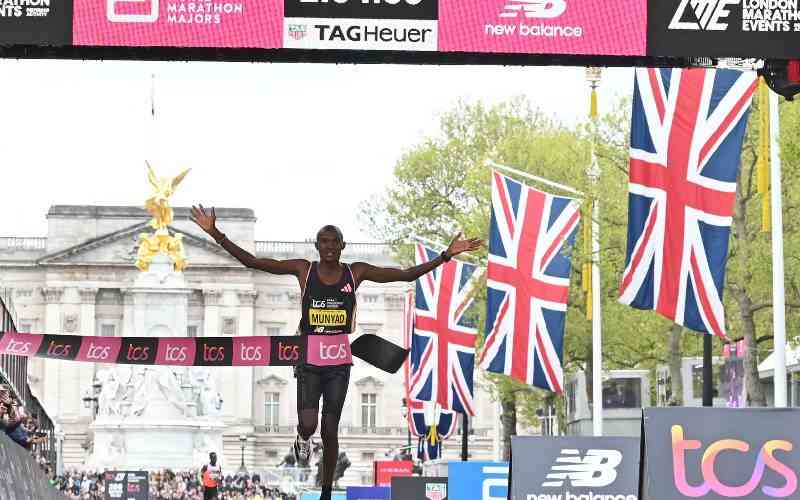Ferdinand Omanyala, the Commonwealth Games 100m champion has become a sensation in Kenya. Last weekend he clocked a world lead time of 9.81 seconds in 100 metres at Athletics Kenya meet at Nyayo Stadium. Why has it taken Kenya and East Africa this long to produce sprinters?
Scientists have proved that the best sprinters come from West Africa. The irony is no West African has ever held a sprint record. Most of the records have been held by athletes of West African descent who hail from the Americas, Jamaica, Canada and USA.
These are descendants of the slaves who were shipped majorly from West Africa to the plantations in Americas. The 100m race is the shortest outdoor race in athletics and has been contested at the Summer Olympics since 1896 for men and since 1928 for women.
IAAF Competition Rules determined by the first athlete with their torso which does not including limbs, head, or neck over the nearer edge of the finish line. When the placing of athletes is not obvious, a photo often derived from the video, called a photo-finish is used to determine who was first to cross the line.
Headwinds can interfere with sprinters' speed, hence why indoor races clock faster timings. Altitude is known to affect sportsmen but sprinters perform better at high altitudes because the air is thinner air thus less resistance.
The thin air would also make breathing slightly more difficult but this difference is negligible for sprinters because all the oxygen they need for the short dash is already in the muscles and bloodstream when the race starts. IAAF does not put limits on altitude but performances made at altitudes above 1000 m are marked with an "A".
The 10-second barrier
The 10-second was considered a barrier for the 100 metres in men's sprinting just like two hours has been held for men's marathon. American Jim Ray Hines became the first man to break the 10-second barrier at the 1968 Summer Olympics where electronic timing clocked 9.86 seconds but was later adjusted to 9.95 seconds.
Since then, several sprinters have clocked sub-10 seconds timings. The current men's world record is 9.58 seconds, set by Jamaica's Usain Bolt in 2009, while American Florence Griffith-Joyner is the women's world record holder at 10.49 seconds set in 1988. Over the last nine Olympics until 2020 in men's 100-meter races, all 72 finalists have been of West African descent except Frankie Fredricks of Namibia, Akani Simbine of South Africa and Bingtian Sun of China.
Italian Marcell Jacobs the reigning champion is the son of an African American father. Why is the West African gene dominant in sprints? It is good to note that the gene only performs when it meets a good environment where facilities are world-class. This is the reason West Africans have not won gold in the sprints but a few of their sprinters have reached the finals.
It has also been noted that Africans have longer legs and Caucasians have a longer torso. In a study on USA army recruits, when they sat down, African Americans appeared shorter because their legs account for more in height.
This is the reason why Africans have struggled in swimming where a longer torso is advantageous.
Bengt Saltin, director of Copenhagen Muscle Research Institute, concluded that an athlete's "environment" accounts for no more than 20-25 per cent of athletic performance ability. The rest is down to genetics. Black sprinters benefit from the presence of alpha-actinin-3 protein or ACTN3 gene dubbed the "speed gene".
It makes muscles twitch fast which is critical for sprints. Lacking the ACTN3 protein does not have any negative health effects but improves running ability. Scientists have concluded that it is next to impossible for someone without the ACTN3 protein to become an elite sprinter.
Genes may make the difference that separates elite athletes, but it is not the only factor that propels a sprinter. The countries where sprinters thrive have built a culture around sprints where sprinters are respected and they have invested in facilities for training.
In as much as we may not have many people with ACTN3 protein in muscle fibre, we can find a few like Omanyala who most likely has a variant of this gene. Rugby legend Humphrey Khayange has a frame of a sprinter. Unlike middle and long-distance races where athletes just emerge, here we must put in some work. Genetic analysis is the place to begin.
 The Standard Group Plc is a multi-media organization with investments in media
platforms spanning newspaper print operations, television, radio broadcasting,
digital and online services. The Standard Group is recognized as a leading
multi-media house in Kenya with a key influence in matters of national and
international interest.
The Standard Group Plc is a multi-media organization with investments in media
platforms spanning newspaper print operations, television, radio broadcasting,
digital and online services. The Standard Group is recognized as a leading
multi-media house in Kenya with a key influence in matters of national and
international interest.
 The Standard Group Plc is a multi-media organization with investments in media
platforms spanning newspaper print operations, television, radio broadcasting,
digital and online services. The Standard Group is recognized as a leading
multi-media house in Kenya with a key influence in matters of national and
international interest.
The Standard Group Plc is a multi-media organization with investments in media
platforms spanning newspaper print operations, television, radio broadcasting,
digital and online services. The Standard Group is recognized as a leading
multi-media house in Kenya with a key influence in matters of national and
international interest.






